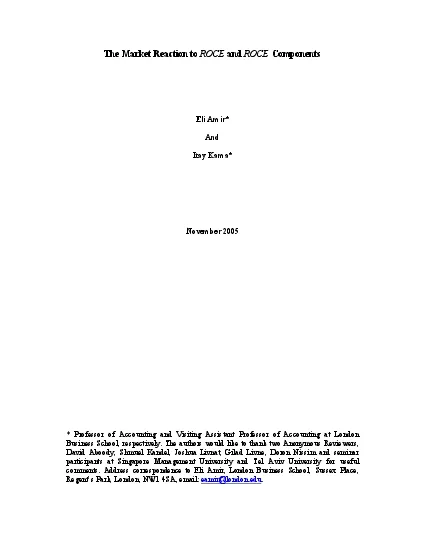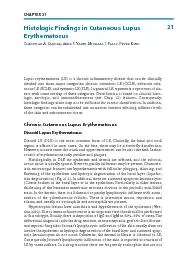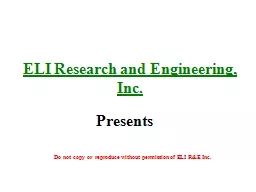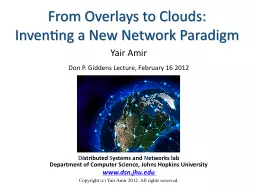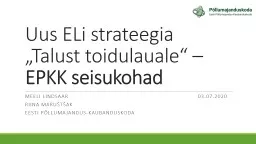PDF-The Market Reaction to and Components Eli Amir And November 2005 Pr
Author : mary | Published Date : 2021-08-09
The Market Reaction to and Components 1 Introduction Numerous studies beginning with Ball and Brown 1968 and Beaver 1968 have examined the information content of
Presentation Embed Code
Download Presentation
Download Presentation The PPT/PDF document "The Market Reaction to and Components ..." is the property of its rightful owner. Permission is granted to download and print the materials on this website for personal, non-commercial use only, and to display it on your personal computer provided you do not modify the materials and that you retain all copyright notices contained in the materials. By downloading content from our website, you accept the terms of this agreement.
The Market Reaction to and Components Eli Amir And November 2005 Pr: Transcript
Download Rules Of Document
"The Market Reaction to and Components Eli Amir And November 2005 Pr"The content belongs to its owner. You may download and print it for personal use, without modification, and keep all copyright notices. By downloading, you agree to these terms.
Related Documents

